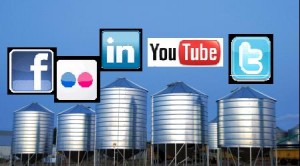What is the Opportunity Cost?
May 24th, 2013Opportunity cost – the cost of what you give up in order to do something else. It is something that is pounded into you in an MBA program. Â The question of “what else could be done with this time or money” constantly comes up. A great project will be passed on simply because there is an even better project to fund and a business cannot do all of the projects at once. Trying to do so will, most likely, lead to failure of many or all of the projects.
This concept of opportunity cost truly is an important concept. It is important to realize that choosing to do thing A means that you won’t be able to do thing B. It’s not good or bad; that’s just how it is. The problem that I’ve run into recently is that I’ve become more aware that every decision actually does have an opportunity cost. While this seems simple enough on the surface, it’s actually a bit of a problem. Thinking about what the alternatives might be isn’t all that productive for small decisions. Furthermore, the reality is that it’s not possible to know all of the ramifications of the actions you take.
With this realization, I have had to become comfortable with once again not thinking of the opportunity cost of small decisions. It simply isn’t worth it.
For example, like any good MBA I keep up on the news of the day. I enjoy getting the WSJ every day – paper delivery – as well as following headlines on various news sites. I’m also a sucker for a good magazine offer (tip: pay with check to avoid auto-renewal and just let it lapse). My RSS feeds are a wonderful source of consolidation, despite what Google thinks. There was a time when I could follow many of these things and still have time left over. As you know, that’s no longer the case and likely won’t be again. This is where opportunity cost comes into play.
Previously, I would worry about missing a day of news, an item in RSS, or not reading magazines cover to cover. My overarching thought was “what if I miss something?!” I had to let it go. There simply wasn’t enough time to catch up – I would just get further behind. And as items would build up, the task would grow ever more insurmountable and the gap would grow. Now I use an elimination strategy and don’t worry about it.
If I have not read the prior magazine when the next one arrives, the old one is recycled. Same with the paper. For RSS I simply allocate myself a certain amount of time to read. When time is up, I consider everything as read and start a blank slate. This has been a huge benefit for me because I feel so much more in control. When my WSJ subscription lapsed for a month, I just didn’t read WSJ for that month. Was I a little less informed on certain things? Of course, but not completely out of the loop. And so I continue to streamline and manage my time.
Worrying about what I might miss if I don’t spend the time reading all of these articles isn’t worth the stress. The opportunity cost isn’t as high as I thought it was.
As I continued to heighten my awareness of how I was making decisions, I discovered there was more in my life that could use the same treatment. Yes, a run to the store will take 30 minutes or an hour. Yes, that is time that I can’t do something else. Do I still find it a bit annoying that I have to go? Yes, but I have stopped obsessing about it. On the other hand, the reason I don’t have to obsess about it is because I’ve made cuts in other areas. I barely watch TV and it takes a act of nature to entice me to see a movie because it is so hard for me to enjoy watching video when I could be doing something else. But then, there are societal costs for not being able to make conversation about these things.
The first semester of my MBA program definitely put me into hyper-aware mode on how I was spending my time. Looking for all of the opportunity costs was productive until it was a source of stress. With the second semester finished it is clear that for some things, the opportunity cost just isn’t worth it.
What is your largest opportunity cost?
This has been a Thought From the Cake Scraps.








